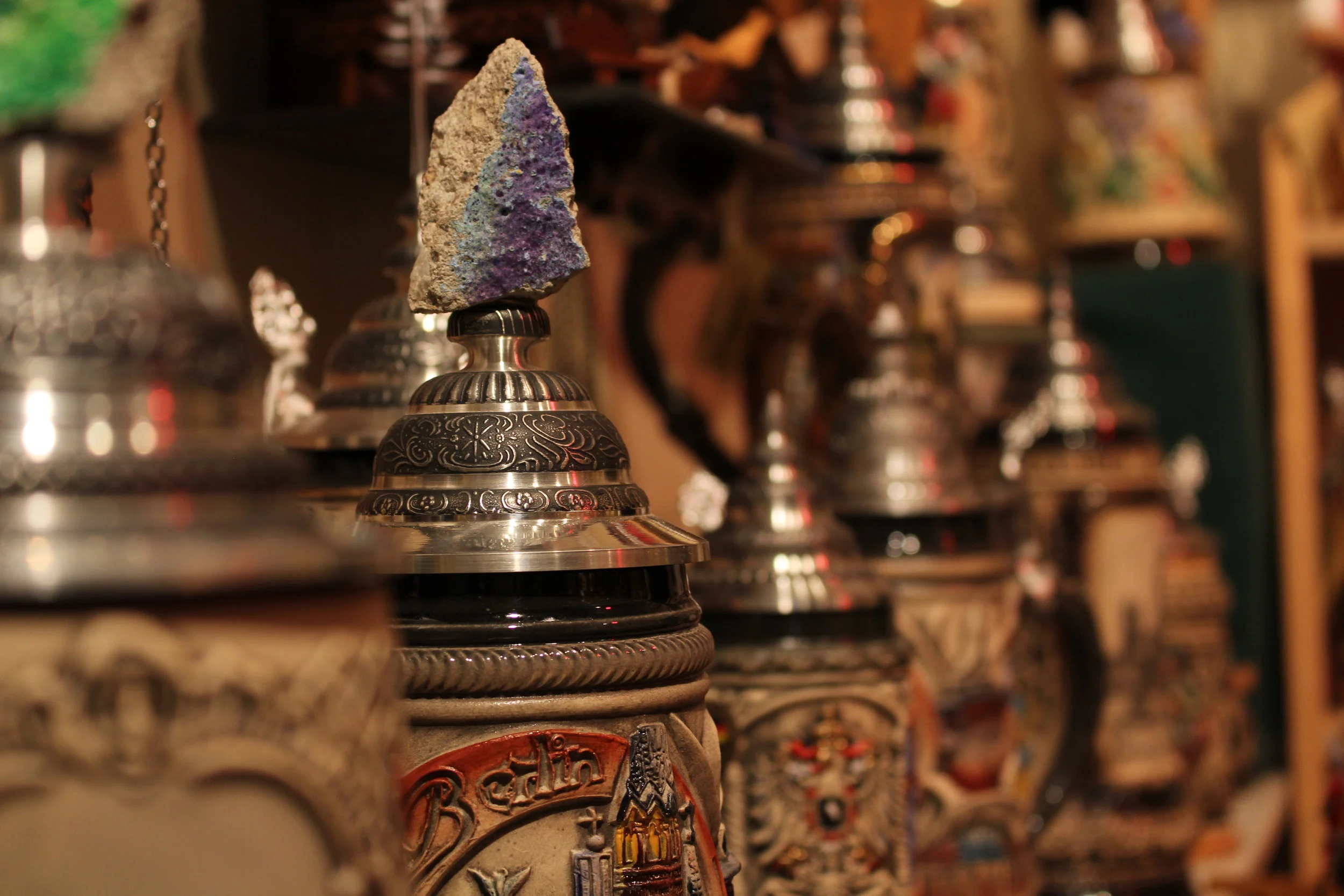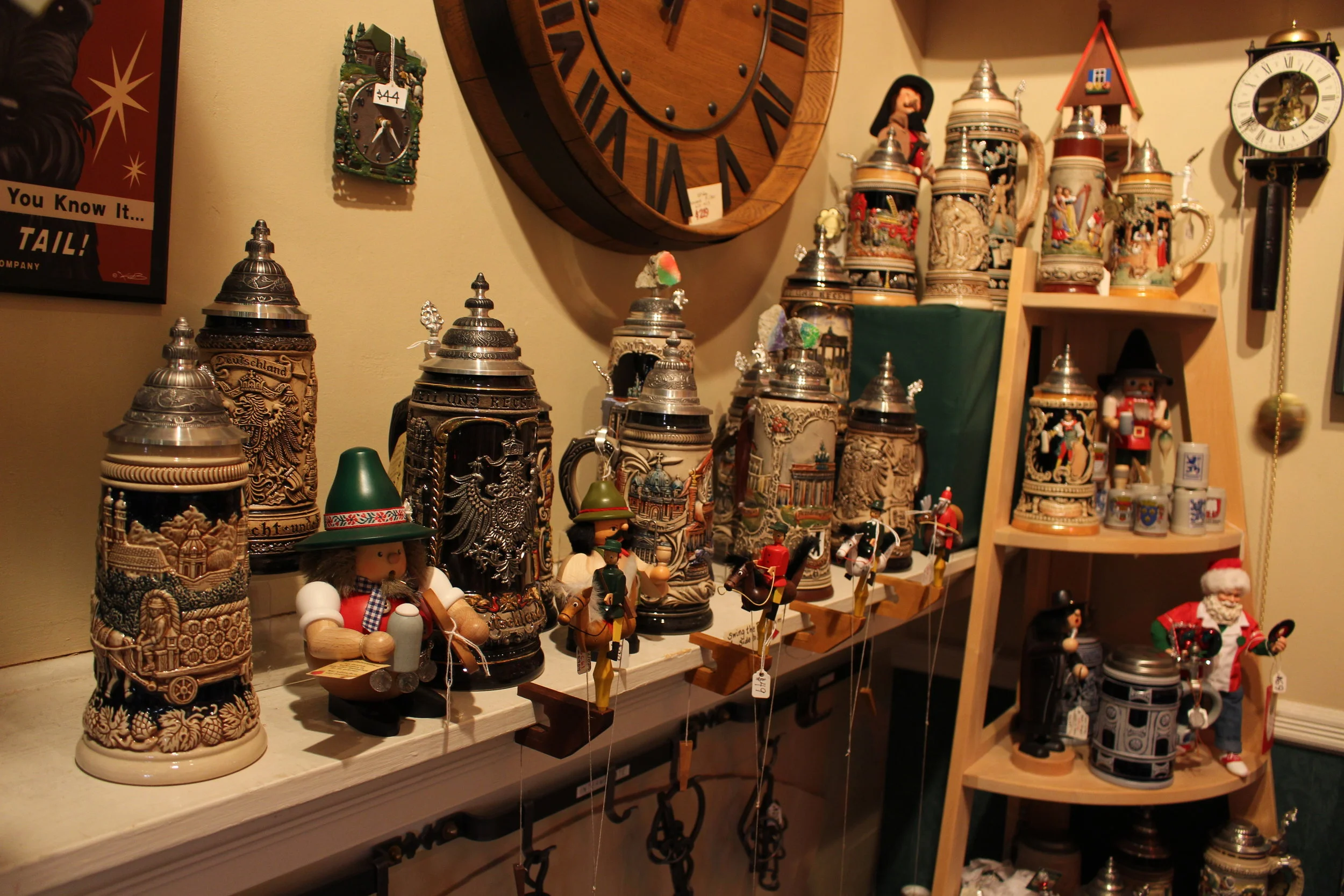Beer Steins
Like so much of German crafting, Beer Steins have a long history with deep regional roots. Steins – bierkrug in German – come from the city of Koblenz in central Germany. The clay in the surrounding hillside provides the material for all kinds of handicrafts in this region; steins are just one expression of this art form.
While today’s beer steins are most often appreciated for their complex decoration, many elements of original 16th century beer steins were practical rather than artistic. The quality and weight of the clay insulated beers and ales perfectly at cellar temperature in a time before refrigeration. The pewter lids were added as a post-Plague effort at hygiene, when German laws began to dictate that food and drink had to be covered to protect from the spread of disease.
But of course, as the centuries passed, the practical elements broadened and evolved into an outlet of creative expression. More traditional steins connect to authentic German folk history, telling the stories of the people themselves and where they came from. This might include elaborate scenes of the harvest and the hunt, romantic scenes of young love and wedding parades, or simply scenes of communities drinking together.
Many of the most popular steins in the modern USA are souvenir steins that came home with American soldiers stationed throughout Germany, which depict famous scenery and experiences of those cities. Another subset of steins draw their imagery from Catholic history in Germany, often featuring noblemen off to the crusades, knights in shining armor, even St. Georg slaying the dragon.
Art and imagery on steins was as personal as any other art and artistry. Even today, you can find differences between different factories’ productions. They are all unified, however, in their commitment to authentic methods and a celebration of Germany and its history.




